"Generic 2.5 mg bystolic with mastercard, nqf 0013 hypertension".
By: J. Taklar, M.B.A., M.D.
Associate Professor, New York Institute of Technology College of Osteopathic Medicine
This hormone reduces blood calcium levels by suppressing tubular reabsorption of calcium blood pressure just before heart attack order bystolic with visa, thereby enhancing calcium urinary excretion and inhibiting bone resorption minimizing calcium flux from bone 5 fu arrhythmia buy bystolic cheap. Although each calcitonin has a Chapter 21 Agents Treating Bone Disorders 709 Figure 21 blood pressure medication night sweats cheap bystolic 5 mg amex. These differences cause calcitonin-salmon to be one order of magnitude greater than human calcitonin in reducing calcium concentration in the blood stream of mammals arrhythmia jaw pain purchase bystolic 2.5mg mastercard. Because of the adverse effects, there can be inflammation at the injection site plus flushing, nausea, and vomiting following an injection. The approved indications for calcitonin-salmon are hypercalcemia, Paget disease, and postmenopausal osteoporosis. Teriparatide is administered once daily because once-daily administration stimulates new bone formation by stimulation of osteoblastic activity over osteoclastic activity. Teriparatide is indicated for primary postmenopausal osteoporosis in women who are at high risk of fracture and for increasing bone mass in men with primary or hypogonadal osteoporosis who are at high risk for fracture. Treatment for the latter includes calcium supplements and vitamin D with the goal to maintain blood calcium levels. The effect was observed at systemic exposures to teriparatide ranging from 3 to 60 times the exposure in humans given a 20- g dose. The boxed warning also warns against administering teriparatide to patients with Paget disease because of the active osteoblastic activity associated with this disease. Hyperparathyroidism the focus on this chapter has been on diseases that interfere with bone remodeling. There are two vitamin D analogs that are indicated for renal failure when patients are on dialysis. These are paricalcitol (19nor-1,3,25-trihydroxyergocalciferol) and doxercalciferol (25norhydroxy-1,3-dihydroxyergocalciferol). Cinacalcet is indicated for secondary hyperparathyroidism in patients undergoing renal dialysis and hypercalcemia caused by parathyroid carcinoma. The key is balance, and this will require long-term studies in patients with postmenopausal osteoporosis. Using knockout mice models that are deficient in Lrp5, increased serotonin levels results in decreased bone formation. Most of the gut-produced serotonin is taken up by platelets with much of the remainder possibly affecting bone formation by controlling osteoblast proliferation. What is the basis for the adverse reactions seen with administration of calcitonin-salmon National Institutes of Health Osteoporosis and Related Bone Diseases-National Resources Center. Induction agents are designed to move the patient through this undesirable stage quickly. During this stage, a painful stimuli will not elicit a somatic reflex or deleterious autonomic response. Inhaled anesthetics are used in combination with other drugs to induce anesthesia. The drug combinations used to achieve this are complex and will not be addressed here; the reader is referred to a general anesthesia textbook for a more detailed description. The Ideal Inhaled Anesthetic the ideal inhaled anesthetic will be inexpensive, potent, pleasant to inhale, minimally soluble in the blood and tissues, stable on the shelf and during administration, and lack undesirable side effects such as cardiotoxicity, hepatotoxicity, renal toxicity, and neurotoxicity. The ideal inhaled anesthetic has not been developed yet and all of these factors must be kept in mind when choosing an anesthetic for a particular patient. The publication of the successful operation led to the use of general anesthetics by surgeons and ushered in the "age of anesthesia. The idea that we can understand the mechanism of action for a general anesthetic supposes that we understand what the term anesthesia means. A clinical definition of general anesthesia is a state where no movement occurs in response to what should be painful. Much research remains to be done on the physiological mechanism of action of the drugs discussed in this chapter.
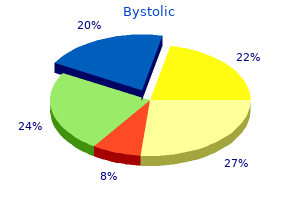
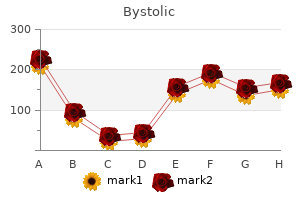
This modality allows one to visualize organs in motion heart attack sam tsui chrissy costanza buy bystolic overnight, position the patient for spot film exposures arrhythmia episode discount bystolic 2.5mg with amex, instill contrast media into hollow cavities blood pressure monitor amazon cheapest bystolic, and insert catheters into arteries pulse pressure amplification buy cheap bystolic 2.5 mg online. This technique typically provides more detailed information about the anatomical region of interest because the images obtained are numerous thin slices of the imaged area. With this process, the reconstructed images increase the visibility of small differences in the radiographic densities between tissues to a far greater extent than traditional radiographic film. Any agent or compound administered to a patient to improve the visualization of an organ or tissue is called a contrast agent. Air and other gases are negative contrast agents because they render a structure, such as the gut, more translucent. An agent that increases the radiographic opacity of an organ or tissue is a positive contrast agent. An ideal radiographic contrast agent should have the following properties: (a) readily available, (b) inexpensive, (c) excellent x-ray absorption characteristics at the x-ray energies used in diagnostic radiology, (d) minimal toxicity, (e) patient acceptance, (f) chemical stability, (g) high-water solubility with low viscosity and no significant osmotic effects, and (h) the ability to be administered for selective tissue uptake and excretion. Barium sulfate and various iodine compounds, however, produce excellent radiological contrast with low patient toxicity and relatively low cost. The use of barium and iodine compounds as radiological contrast agents is based on their radiographic appearance, distribution, and elimination from the body. Contrast media are used in very large quantities and are usually administered over a brief period of time. It produces a metal-like density on radiological studies, is inexpensive, and when properly utilized, has minimal patient morbidity and mortality. While various water-soluble barium compounds are quite toxic, barium sulfate is an insoluble white power that is a colloidal suspension in water. Most intravenous contrast agents used to opacify blood vessels and increase contrast in solid organs, such as the liver, are water-soluble organic iodides. Iodine absorbs xrays effectively at many energy levels and produces opacities similar to bone density during radiographic studies. In solution, these salts dissociate into two particles: (a) a triiodinated anion and (b) a cation, usually sodium or methylglucamine (meglumine). These water-soluble iodinated salts are administered in fairly high volumes and concentrations to achieve satisfactory radiological contrast. It is not unusual to administer as much as 100 mL or more of a 30% to 70% solution intravenously. This is typically accompanied by vasodilatation, local pain and warmth, a metallic taste in the mouth, and flushing. Various nonionic water-soluble compounds with a higher ratio of iodine content per osmotic particle have been developed. Various monomers such as iohexol, iopamidol, iopramide, ioversol, and ioxilan as well as dimers such as iodipamide, iodixanol, and ioxaglate have been described. Even though they are clear liquids, they are often called "dyes" when their administration is being explained to patients. Sodium salts are slightly less viscous than the meglumine salts, which are typically less viscous than nonionic monomers, which are typically less viscous than nonionic dimers. Viscosity is a function of temperature and can be reduced by warming the contrast agent to body temperature prior to its administration. Water-soluble iodinated contrast media have relatively small molecular sizes and low chemical reactivity with body fluids and tissues. Their pharmacodynamic characteristics are similar to those of extracellular tracers. Special attention must be given to ensure that iodinated contrast agents are not administered intrathecally unless they are indicated for such use. Inadvertent intrathecal administration can cause serious outcomes such as convulsions, cerebral hemorrhage, brain edema, and death. Water-soluble iodinated contrast agents are cleared from the body by glomerular filtration. When renal function is compromised, these contrast agents are eliminated in part or totally through the liver and gut. This alternate elimination pathway occurs at a much slower rate than elimination when compared with glomerular filtration in a healthy person.
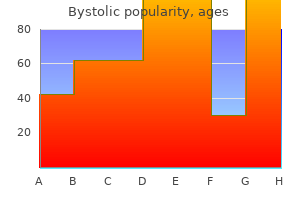
This led to the nitrosoureas blood pressure medication starting with c bystolic 2.5 mg amex, where it was found that activity could be enhanced by attachment of a 2-haloethyl substituent to both nitrogens blood pressure phobia cheap bystolic line. The diazohydroxide pulse pressure 49 buy bystolic 2.5mg amex, upon protonation followed by loss of water blood pressure yoga breathing exercises generic 2.5 mg bystolic, yields a diazo species that decomposes to a reactive carbocation (Scheme 10. Alkylation occurs preferentially at the N-7 position of guanine with minor amounts of alkylation at guanine O-6. Two major routes of inactivation have been identified and are indicated in Scheme 10. Procarbazine is an antineoplastic agent that was originally developed as a result of efforts to find new inhibitors of monoamine oxidase. This compound may also be generated nonenzymatically in an aerobic environment (Scheme 10. The methyldiazine may then decompose by homolytic bond cleavage to give methyl and hydrogen radicals along with nitrogen gas or be further oxidized to give the diazo compound, which can decompose to give the methyl carbocation. Methyldiazine may also be produced by a minor route involving isomerization of azo-procarbazine to give the hydrazone, which subsequently undergoes hydrolysis to give the aldehyde and methylhydrazine. Methylhydrazine may react with oxygen to give methyldiazine, which then decomposes as before. The agent is also capable of inhibiting aldehyde dehydrogenase and producing a disulfiram-like reaction. Somewhat related is dacarbazine, which was initially thought to act as an inhibitor of purine biosynthesis, but latter was shown to be an alkylating agent. Dacarbazine must be administered intravenously; however, the related temozolomide may be administered orally. The agent is also used topically in the treatment of mycosis fungoides, a rare type of cancer but the most common type of cutaneous T-cell lymphoma. Additional uses have included treatment of cancers that have resulted in pleural effusion. The mechanisms of resistance are the same as those seen for other agents of the class such as mechlorethamine. The agent is well absorbed (75%) upon oral administration and highly protein bound. The drug is eliminated via the kidneys with a terminal elimination half-life of 1. Adverse effects include dose-limiting myelosuppression, which are seen as both leucopenia and thrombocytopenia. Additional adverse effects include hyperuricemia, azoospermia, amenorrhea, seizures, pulmonary fibrosis, and skin rash. Elimination occurs primarily in the feces with an elimination half-life of 38 to 108 minutes. Nausea is normally mild with normal doses but becomes severe when high doses are used during bone marrow transplant. Less commonly seen adverse effects are hypersensitivity reactions, skin rash, and alopecia. The major metabolite seen in plasma is the phosphoramide mustard, although there is a small amount of material (10%) arising from the dechloroethylation, which is primarily mediated by 3A4/5. This metabolic pathway gives rise to a small amount of chloroacetaldehyde, which is both neurotoxic and nephrotoxic. The parent compound and metabolites are eliminated in the urine with an elimination half-life of 4 to 6 hours. Adverse effects include dose-limiting myelosuppression, which normally presents as leucopenia. Bladder toxicity, which presents as hemorrhagic cystitis, is related to the formation of electrophilic species in the kidney including acrolein and may be treated by administration of mesna and increased water intake. Other effects include alopecia, cardiotoxicity, inappropriate secretion of antidiuretic hormone, and an increased risk of secondary cancers. The agent is administered as the racemic mixture as a result of the presence of the chiral phosphorus atom, and differential metabolism of the R- and S-isomers has been observed. In contrast to cyclophosphamide, there is a greater amount of deactivation of the agent by N-dechloroethylation and subsequently more chloroacetaldehyde is produced, which may result in a greater amount of neurotoxicity and nephrotoxicity than seen with cyclophosphamide. The N-dechloroethylated metabolites are the predominate species seen in the plasma.

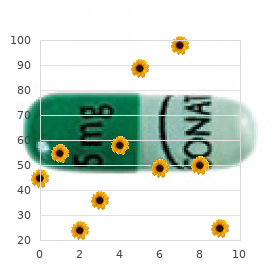
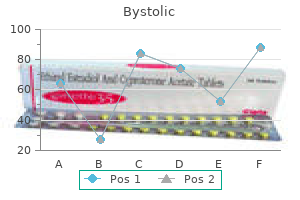
Useful For: Establishing a diagnosis of an allergy to common millet Defining the allergen responsible for eliciting signs and symptoms Identifying allergens: -Responsible for allergic disease and/or anaphylactic episode -To confirm sensitization prior to beginning immunotherapy -To investigate the specificity of allergic reactions to insect venom allergens blood pressure near death cheap bystolic uk, drugs hypertension level 2 buy bystolic on line amex, or chemical allergens Interpretation: Detection of IgE antibodies in serum (Class 1 or greater) indicates an increased likelihood of allergic disease as opposed to other etiologies and defines the allergens that may be responsible for eliciting signs and symptoms blood pressure 70 over 30 generic bystolic 5mg without prescription. Useful For: Establishing a diagnosis of an allergy to common reed Defining the allergen responsible for eliciting signs and symptoms Identifying allergens: -Responsible for allergic disease and/or anaphylactic episode -To confirm sensitization prior to beginning immunotherapy -To investigate the specificity of allergic reactions to insect venom allergens blood pressure template order bystolic, drugs, or chemical allergens Interpretation: Detection of IgE antibodies in serum (Class 1 or greater) indicates an increased likelihood of allergic disease as opposed to other etiologies and defines the allergens that may be responsible for eliciting signs and symptoms. Class switching is the process that allows B cells, which possess IgD and IgM on their cell surface as a part of the antigen-binding complex, to produce IgA, IgE, or IgG antibodies. The deposition of C4d on the walls of peritubular capillaries in kidney allografts or capillaries in cardiac allografts has been associated with antibody-mediated transplant rejection. Useful For: Aids in the identification of antibody-mediated transplant rejection Interpretation: this test includes only technical performance of the stain (no pathologist interpretation is performed). The Journal of Heart and Lung Transplantation 2013;32(45):519-520 C1Q 8851 Complement C1q, Serum Clinical Information: the first component of complement (C1) is composed of 3 subunits designated as C1q, C1r, and C1s. C1q recognizes and binds to immunoglobulin complexed to antigen and initiates the complement cascade. Congenital deficiencies of any of the early complement components (C1, C2, C4) results in an inability to clear immune complexes. Like the more common C2 deficiency, C1 deficiency is associated with increased incidence of immune complex disease (systemic lupus erythematosus, polymyositis, glomerulonephritis, and Henoch-Schonlein purpura). Low C1 levels have also been reported in patients with abnormal immunoglobulin levels (Bruton and common variable hypogammaglobulinemia and severe combined immunodeficiency). A low C1q in combination with a low C1 inhibitor and low C4 suggests an acquired C1 inhibitor deficiency. The primary complement pathway consists of recognition (Clq, Clr, Cls), activation (C4, C2, C3), and attack (C5, C6, C7, C8, C9) mechanisms with respect to their role in antibody-mediated cytolysis. The complement system can be activated via immune complexes, and the alternative pathway (properdin pathway), which is activated primarily by foreign bodies such as microorganisms. When immune complexes are not involved, the alternate method of complement activation initiates the reactant sequence at C3, bypassing C1, C4, and C2. Severe recurrent bacterial infections occur in patients with homozygous C3 deficiency and in those patients with low levels of C3 secondary to the absence of C3b activator. Decreased C3 may be associated with acute glomerulonephritis, membranoproliferative glomerulonephritis, immune complex disease, active systemic lupus erythematosus, septic shock, and end-stage liver disease. N Engl J Med 1987;316:1525-1530 C4 8171 Complement C4, Serum Clinical Information: the complement system is an integral part of the immune defenses. It can be activated via immune complexes (classic pathway) or by bacterial polysaccharides (alternative pathway). The classic complement pathway consists of recognition, (C1q, C1r, C1s), activation (C2, C3, C4), and attack (C5, C6, C7, C8, C9) mechanisms with respect to their role in antibody-mediated cytolysis. In the absence of C4, immune complexes will not be cleared by C3 activation peptides, but bacterial infections can still be defended via the alternative pathway. C4 may be decreased in systemic lupus erythematosus, early glomerulonephritis, immune complex disease, cryoglobulinemia, hereditary angioedema, and congenital C4 deficiency. There are 3 pathways to complement activation: 1) the classical pathway, 2) the alternative (or properdin) pathway, and 3) the lectin (or mannan-binding lectin) pathway. A single IgM molecule or two IgG molecules are sufficient to trigger activation of the recognition complex initiated by C1q. Patients with deficiencies of the early complement proteins are unable to generate the peptides that are necessary to clear immune complexes and to attract neutrophils or to generate lytic activity. These patients have increased susceptibility to infections with encapsulated microorganisms. They may also have symptoms that suggest autoimmune disease; complement deficiency may be an etiologic factor in the development of autoimmune disease. Undetectable complement levels are found in patients with specific component deficiencies. Decreased complement levels are found in infectious and autoimmune diseases due to fixation and consumption of complement. Useful For: Detection of individuals with an ongoing immune process First-tier screening test for congenital complement deficiencies Interpretation: Low levels of total complement (total hemolytic complement) may occur during infections, disease exacerbation in patients with systemic lupus erythematosus, and in patients with immune complex diseases such as glomerulonephritis.
Buy bystolic 5mg visa. CBD Oil vs Copaiba Oil – Dr. Hill and Dr. O Discuss How CBD and Copaiba Work.


